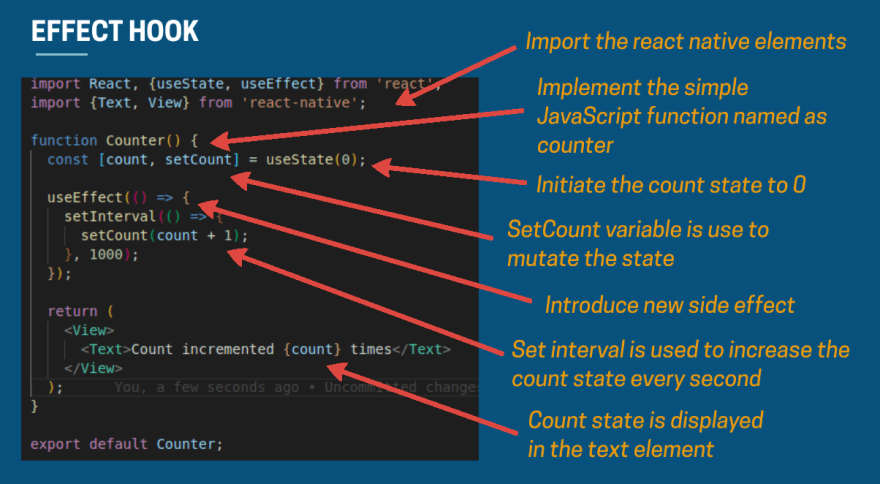Antwort Why use useEffect instead of useState? Weitere Antworten – Should I use useState or useEffect
In summary, useState is used to manage state within a component, allowing you to store and update data. useEffect is used to perform side effects in a component, such as updating the document title, fetching data, or subscribing to events.Why choose useEffect hook useEffect hook is used to handle side effects in functional components, such as fetching data, updating the DOM, and setting up subscriptions or timers. It is used to mimic the lifecycle methods of class-based components.Commonly, forms in React are managed by linking input elements to state variables, updating the state with every keystroke. While this approach works, it can lead to unnecessary re-renders and performance issues, especially in large forms or complex applications.
What are the disadvantages of useState : Disadvantages of useState
useState can become unwieldy if you need to manage complex state, especially if the state is deeply nested. In such cases, it can be difficult to update the state correctly.
Why we should not use useEffect in React
Hooks are great, but useEffect can easy become big "side-effect-esque" functions in react, hurting readability of a component as well as the maintainability. the best (very simplistic) example of this is when a "stepper" is needed in React.
What are the cons of useEffect : Cons of useEffect():
While dependency tracking is a powerful feature, managing complex dependency arrays can be challenging and error-prone. Incorrectly specifying dependencies can lead to unexpected behavior, such as missing updates or unnecessary re-renders.
useEffect does not provide built-in error-handling mechanisms, making it challenging to handle errors within Effects. While developers can use try-catch blocks or error boundaries, managing errors in asynchronous effects can be cumbersome and may result in unhandled exceptions.
useReducer also lets you optimize performance for components that trigger deep updates because you can pass dispatch down instead of callbacks. This means that the dispatch function does not change between renders, unlike the functions created by useState , which can cause unnecessary re-renders of child components.
What is the best alternative to useState
Advanced Hooks
- useReducer: This hook is an alternative to useState and provides a way to manage complex state in your components.
- useCallback: This hook is used to memoize functions and optimize performance.
- useMemo: This hook is similar to useCallback, but instead of memoizing a function, it memoizes a value.
React Query Data Fetching technique. The use of useEffect in React applications is not inherently bad. It is a crucial part of the React Hooks system that is meant to deal with side effects (like data fetching, subscriptions, timers, manual DOM manipulations, etc.) in functional components.There are some situations in which you should avoid using useEffect due to potential performance concerns.
- Transforming data for rendering. If you need to transform data before rendering, then you don't need useEffect .
- Handling user events. You don't need useEffect to handle user events.
Hooks are great, but useEffect can easy become big "side-effect-esque" functions in react, hurting readability of a component as well as the maintainability. the best (very simplistic) example of this is when a "stepper" is needed in React.
Is useEffect good or bad : The use of useEffect in React applications is not inherently bad. It is a crucial part of the React Hooks system that is meant to deal with side effects (like data fetching, subscriptions, timers, manual DOM manipulations, etc.) in functional components.
Why is useState slow : More the number of usestate more bulkier the component will be and hence slow rendering time.
Why not use useRef instead of useState
useRef is primarily used to access and manipulate the DOM or store mutable values without triggering re-renders. It provides a mutable reference that persists across component renders. On the other hand, useState is used for managing component state, triggering re-renders when the state updates.
Hooks are great, but useEffect can easy become big "side-effect-esque" functions in react, hurting readability of a component as well as the maintainability. the best (very simplistic) example of this is when a "stepper" is needed in React.







